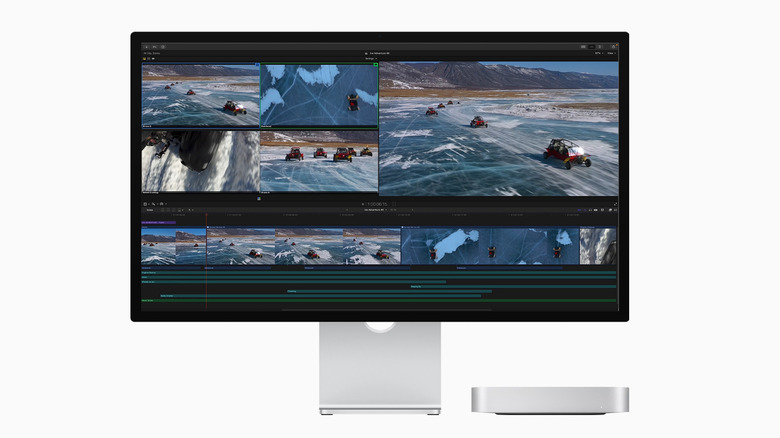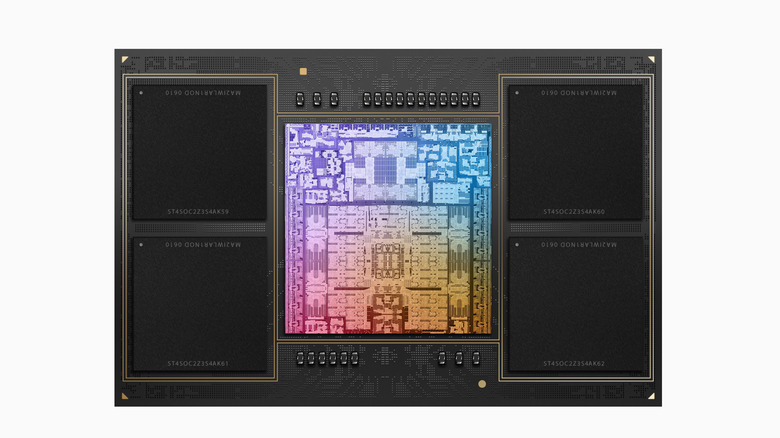Apple Gives M2 Pro And M2 Max SoCs Surprise Reveals
Rumors of incoming Apple product reveal turned out to be true, as Apple made several such announcements to kick the day off. In addition to launching new MacBook Pro models, the company also announced a refreshed lineup of Mac Minis. While these products did not undergo a design overhaul, both got massive changes to the internals thanks to Apple's brand new chips — the M2 Pro and the M2 Max. For those unaware, these chips are direct successors to the M1 Pro and the M2 Max (announced in October 2021). The new M2-branded chips join the Apple M2 SoC lineup, which Apple announced a little over six months ago in June 2022.
Apple claims significant performance gains with its newest chips thanks to a 12-core CPU + 19-core GPU in the M2 Pro. In the case of the M2 Max, Apple has kept the same 12-core CPU as the M2 Pro, but added in an even more powerful 38-core GPU. In addition to performance claims, Apple also asserts that the new chips offer "industry-leading performance per watt" figures, making them the world's most powerful and power-efficient chips for a pro laptop — at least on paper. CPU and GPU enhancements aside, both the chips get an upgraded 16-core Neural Engine and Apple's powerful media engine. The arrival of the M2 Pro and M2 Max chips on the Mac mini marks the first time that pro-level chips have come to the Mac mini lineup.
Apple M2 Pro chip: Everything you need to know
The new M2 Pro SoC is the latest chip from Apple built on the second-generation 5nm manufacturing process. The M2 Pro chip boasts a transistor count of 40 billion, which is 20 percent more than the M1 Pro chip from 2021 and twice the number of transistors on the M2 chip announced last year.
The M2 Pro's CPU gets up to eight high-performance cores and four high-efficiency cores that claim 20% performance gains over the M1 Pro's 10-core CPU. The M2 Pro also supports up to 200GB/s of unified memory bandwidth, which is twice that of the M2.
The GPU on the M2 Pro is configurable with up to 19 cores. This, combined with the larger L2 cache, allows Apple to claim a 30% improvement in graphics performance compared to the existing M1 Pro-based Macs. Apple claims that these improvements to the new chips let them run programs like Photoshop and Xcode "up to 2.5 times faster than on the fastest Intel-based MacBook Pro" models.
Apple M2 Max: The most powerful Apple CPU yet
The M2 Max chip is the current performance king from Apple silicon, and its 67 billion transistors make even the M2 Pro's 40 billion transistor count look paltry. The M2 Max supports a staggering 400GB/s of unified memory bandwidth (compared to 200GB/s on the M2 Pro) and up to 96GB of fast unified memory.
The 12-core CPU used on the M2 Max is identical to the one we see on the M2 Pro. Graphics performance is where the M2 Max takes a significant lead over the M2 Pro with its 38-core GPU, which, on paper, claims to offer a 30% performance gain compared to the M2 Pro.
With support for up to 96GB of memory, Apple claims that systems using the M2 Max could easily "tackle graphics-intensive projects that competing systems can't even run". Apple expects M2 Max chips to be used for various use cases, ranging from powering complex visual effects and training machine learning models to stitching together massive images.


